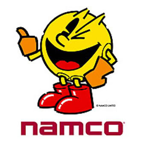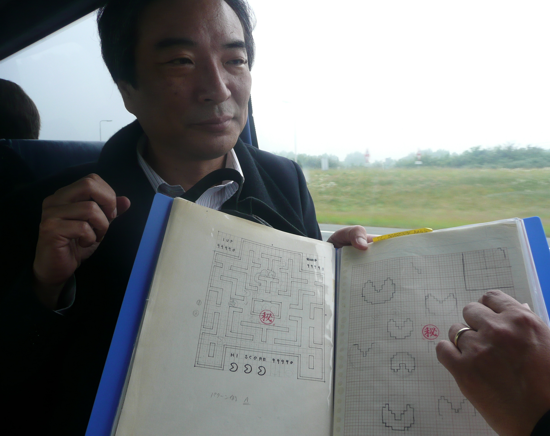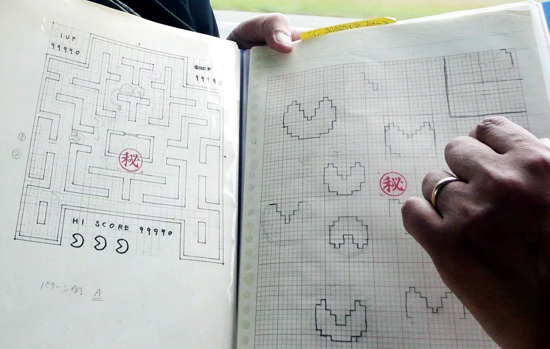 |
| Pac-Man character logo 1980 |
Names:
--- "Pac-Man" (USA)
--- "Pakkuman" (Japan)
--- "Pac-Man" (USA)
--- "Pakkuman" (Japan)
Category: Video games
Subcategory: Arcade
Genre: Maze
Inventor: Toru Iwatani
Developer: Namco Ltd. - Tokyo, Japan
Publishers: Namco (Japan), Midway (North America)
Released: May 22, 1980 (Japan) - October 1980 (North America)
Platform: Arcade
First price: 1 play 1 coin - 25 cents
 |
| Toru Iwatani (Tokyo, Jan. 25, 1955) video game designer and creator of the arcade game Pac-Man |
Number of players: Up to 2 players, alternating turns
Cast of characters (original names):
--- Puck Man
--- Red ghost: Oikake, nickname Akabei
--- Pink ghost: Machibuse, nickname Pinky
--- Cyan ghost: Kimagure, nickname Aosuke
--- Orange ghost: Otoboke, nickname Guzuta
--- Puck Man
--- Red ghost: Oikake, nickname Akabei
--- Pink ghost: Machibuse, nickname Pinky
--- Cyan ghost: Kimagure, nickname Aosuke
--- Orange ghost: Otoboke, nickname Guzuta
Cast of characters (American names):
--- Pac-Man
--- Red ghost: Shadow, nickname Blinky
--- Pink ghost: Speedy, nickname Pinky
--- Cyan ghost: Bashful, nickname Inky
--- Orange ghost: Pokey, nickname Clyde
--- Pac-Man
--- Red ghost: Shadow, nickname Blinky
--- Pink ghost: Speedy, nickname Pinky
--- Cyan ghost: Bashful, nickname Inky
--- Orange ghost: Pokey, nickname Clyde
Music by: Toshio Kai
Features: The player controls Pac-Man through a maze, eating pac-dots (also called pellets). When all pac-dots are eaten, Pac-Man is taken to the next stage. Between some stages one of three intermission animations plays. Four enemies (Blinky, Pinky, Inky and Clyde) roam the maze, trying to catch Pac-Man. If an enemy touches Pac-Man, a life is lost and the Pac-Man itself withers and dies. When all lives have been lost, the game ends. Pac-Man is awarded a single bonus life at 10,000 points. Near the corners of the maze are four larger, flashing dots known as power pellets that provide Pac-Man with the temporary ability to eat the enemies. The enemies turn deep blue, reverse direction and usually move more slowly. When an enemy is eaten, its eyes remain and return to the center box where it is regenerated in its normal color. Blue enemies flash white to signal that they are about to become dangerous again and the length of time for which the enemies remain vulnerable varies from one stage to the next, generally becoming shorter as the game progresses. In later stages, the enemies go straight to flashing, bypassing blue, which means that they can only be eaten for a short amount of time, although they still reverse direction when a power pellet is eaten; in even later stages, the ghosts do not become edible, but they still reverse direction.
Interesting facts: This game has a bug in it that prevents it from being completely finished. This bug occurs at the 256th board, where it will cause an overflow in the the 8-bit byte distinct values. As a result, the final board as unplayable, with the right half replaced by a series of garbled symbols and letters.
Slogan (1980): «A labyrinth of fun & amusement!»
Property: Namco Ltd.
Official website: https://pacman.com
 |
 |
 |
| Pac-Man, original sketches by Toru Iwatani |
 |
| Pac-Man, screenshot of the play area |
 |
The Japanese cabinet by Namco (left) and the North American version by Midway, which changed the game's name from "Puck Man" to "Pac-Man" in an effort to avoid vandalism from people changing the letter 'P' into an 'F' to form the word 'Fuck'. |
 |
Puck Man "cocktail table" cabinet by Namco (top) and the Pac-Man version by Midway |
| Midway Pac-Man arcade machine review |
  |
Puck Man (Namco) advertising (1980) |
  |
Pac-Man (Midway) advertising (1980) |
 |
| Pac-Man (Midway) advertising (1981) |
  |
| Pac-Man cartridge for Atari 400/800 home computers (1982) |
 |
| Pac-Man celebrates 40th Anniversary (May 22, 1980 - 2020) |
